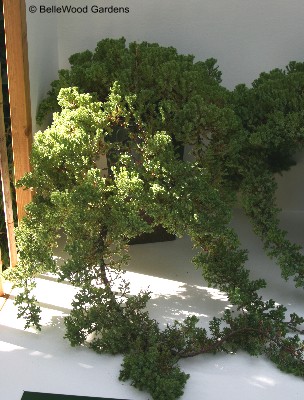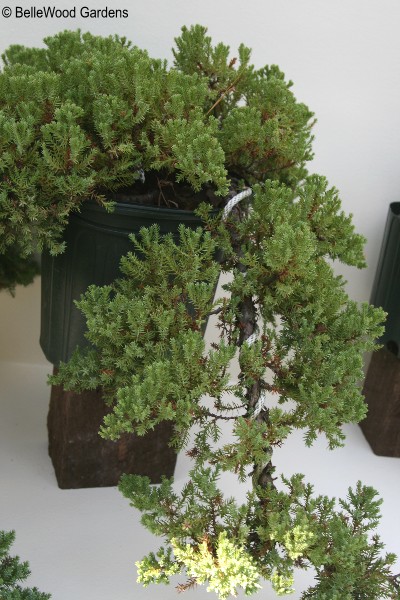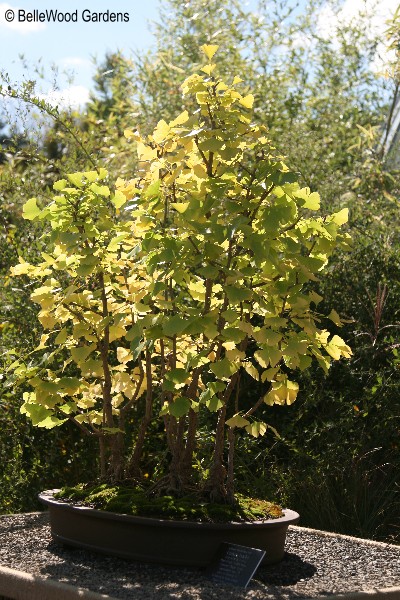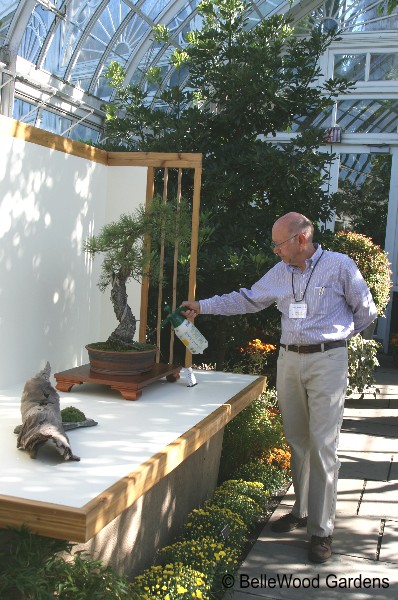
Friday, 17 October 2008
Bonsai at the New York Botanical Garden
Stupendous though they are, there's more to be enjoyed at the New York Botanical Garden's kiku festival than just chrysanthemums. In the outdoor waterlily courtyards, as well as kiku there are Japanese maples, bamboo, and perennials. There's Tricyrtis or toad lily, with its unusual purple-spotted flowers, Hakonechloa macra 'Auruola', named Japanese wind-combed grass for its gracefully arching golden blades with pencil-thin green stripes, and more. Classic among Japan's many specialized garden techniques is bonsai. The name derives from the words for bowl plus plant. It may be used as a verb, to bonsai, for the art of growing dwarfed, ornamentally shaped trees or shrubs in small shallow pots or trays, or as a noun, as the name for a tree or shrub grown by these techniques.
Members of the Yama Ki Bonsai Society of Fairfield County, Connecticut have loaned exquisite bonsai. Those on display outdoors in the water lily courtyards will be on display until November 16. There are additional bonsai in the conservatory's seasonal display wing. They will be removed after November 2nd, to make way for the installation of the garden railroad exhibition.

From a low angle, this forest planting bonsai looks like a mountain grove of ancient trees.
.
A wonderful display in the conservatory offers a look at how these trees are created.

Go to the nursery and find a plant with potential, in this case, a juniper.

Set it up on a sturdy block of wood and carefully look it over.
Choose the branch with which you will work. Rope it up.

Here's a closer look.

Remove the other, unwanted branches. Wire up the branch
with annealed heavy-gauge copper wire. Shaping must be gradual.
Patience should be part of the word-name for bonsai. Slowly, always slowly.

The remaining branchlets begin to fill in with new growth,
as the plant tries to balance shoot growth with root growth.

Still young, but developing its form, this graceful cascade style
bonsai juniper is transplanted to the appropriate matching pot
and staged, set on a stand that lifts it up for display.
.

In the courtyard, a forest style gingko, dwarfed specimen
of this ancient-of-days tree, shows the seasonal change
as fan-shaped leaves turn from green to gold.
Look how shallow is its bowl, mere inches of soil.
I asked Margaret Falk if the bonsai were watered daily.
She smiled at me and said, "Three times each day."
Myself, I think if it is breezy and dry that might not be enough.

Consider this man spritzing the base of a bonsai in the conservatory.

It's not the tree he's watering, it's the moss.
There's a whole world down here, of roots arching
over ground, little shrubs nestled against tree trunks.
And the velvety green moss that carpets the forest floor.
Remember
the bonsai display within the conservatory closes 2nd November.
Those outdoors will be on display for two additional weeks,
until the kiku exhibition concludes on 16 November.